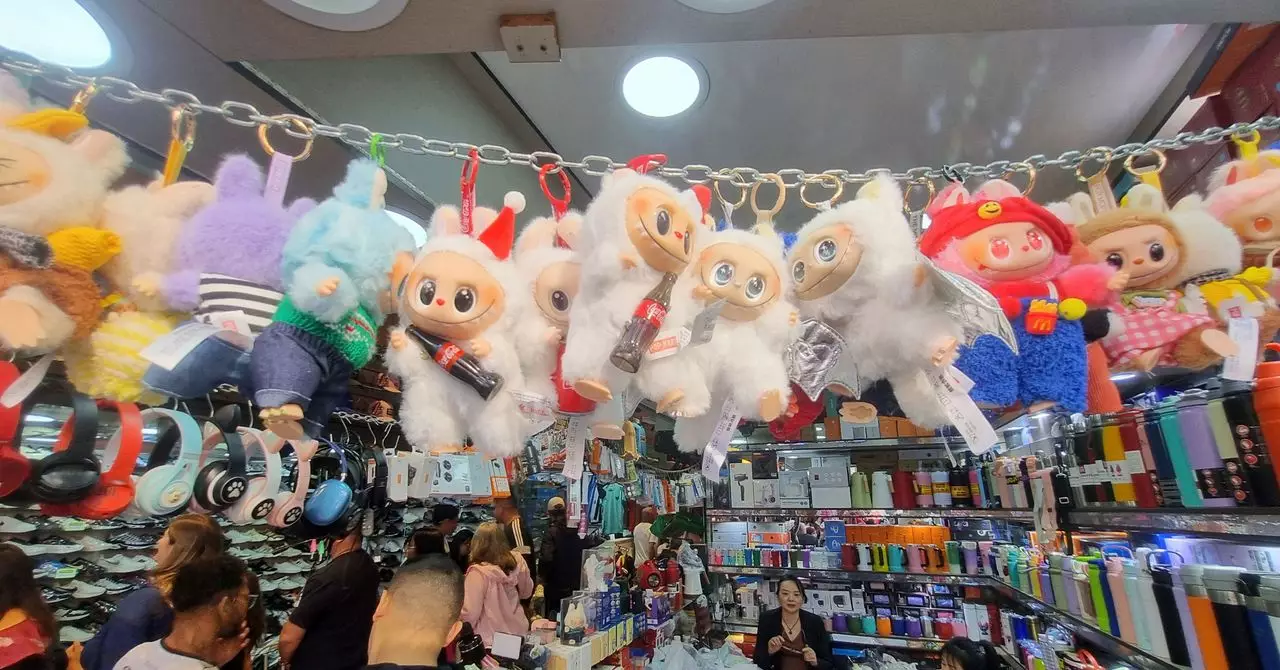In recent years, the toy industry has seen its landscape transformed by a surprising phenomenon: a small, mischievous-looking elf plush named Labubu. Originally a product of Chinese company Pop Mart, Labubu’s rise from niche collectible to worldwide viral sensation exemplifies how cultural trends can revolutionize market dynamics. While many might dismiss the success as fleeting internet hype, the numbers tell an undeniably different story—one of extraordinary profitability and strategic ingenuity.
Pop Mart’s first-half 2025 financial report reveals that Labubu is not only a cultural phenomenon but also a powerhouse. The company experienced a 204% increase in revenue from the previous year, with net profits soaring by 362%. These figures aren’t just polished figures—they reflect a seismic shift in consumer appetite, especially among younger demographics, who have become captivated by these adorable yet mischievous characters. With a gross margin of 70.3%, Pop Mart demonstrates a business model rooted in efficiency and high-margin product lines—primarily driven by Labubu’s franchise.
What is most striking is Labubu’s contribution to these figures. The Monsters franchise, headlined by Labubu, raked in roughly 4.81 billion RMB (about $670 million) in half a year—a staggering 668% surge compared to the same period in 2024. Such figures dwarf even some of the most iconic toy brands; for comparison, Mattel reported $374 million in Barbie sales and $626 million from Hot Wheels in the same period. This underscores the fact that Labubu has become a cultural beacon, surpassing traditional toys and becoming a social media fixture, especially among celebrities and influencers.
The Strategy Behind Viral Success and Market Domination
Pop Mart’s keen understanding of social media trends and celebrity influence has fueled Labubu’s meteoric rise. The company’s strategic release of vinyl-plush keychains—merging the tactile softness of plush toys with the detailed artistry of figurines—proved to be a turning point. Launched in late 2023, these keychains quickly gained popularity, first in China then internationally. Their appearances as bag charms and accessories by renowned figures like Rihanna, Lady Gaga, and Kim Kardashian driven worldwide demand. This celebrity endorsement, whether intentional or organic, sparked an obsessive social media culture around Labubu “ Lafufus,” as fans affectionately call them.
The financial data reflects this trend powerfully: plush product revenue skyrocketed over 1,200%, reaching 6.13 billion RMB ($854 million)—almost half of Pop Mart’s total revenue. This shift toward plush toys signifies a broader consumer appetite for tactile, collectable, yet affordable items that combine aesthetic appeal with cultural cachet. Pop Mart responded to this demand by launching over 20 new plush products in 2025, experimenting with different manufacturing techniques to extend Labubu’s success. However, the story extends beyond official sales.
A considerable shadow hangs over the Labubu craze—counterfeit Lafufus flood the market, sold at inflated prices and fueling a thriving secondhand market. Pop Mart’s deliberate supply shortage further amplifies this: limited availability drives up secondary market prices, increasing profits outside the company’s official earnings and turning Labubu into a coveted collector’s item. This strategy of scarcity, combined with extensive brand proliferation, exemplifies a modern marketing approach rooted in exclusivity and social currency.
Global Expansion and Future Potential
Pop Mart’s international expansion underscores the firm’s belief in Labubu’s staying power. The company’s revenue from outside China now accounts for over 40%, with the American market experiencing an astonishing 1,100% increase in revenue to roughly $315 million in just the first half of 2025. The number of physical stores in this region has nearly doubled, signaling confidence in Labubu’s ability to sustain long-term global appeal.
While Pop Mart’s origins date back to 2010 as a trendy Chinese toy retailer, its aggressive international push—embodied by the Labubu craze—points to larger trends: the blending of internet culture and traditional playthings into a new form of consumer engagement. Labubu is more than a toy; it reflects a cultural shift where viral aesthetics and celebrity influence dictate market success.
This burgeoning empire raises important questions about how cultural commodities are manufactured and marketed in a digital age. Pop Mart’s mastery of social media, scarcity tactics, and strategic product diversification positions Labubu as a new kind of icon—one that blurs the lines between a cute collectible and a cultural phenomenon driving enormous profits. The real question now is how sustainable this frenzy truly is and what other brands can learn from Pop Mart’s aggressive but highly effective approach.

